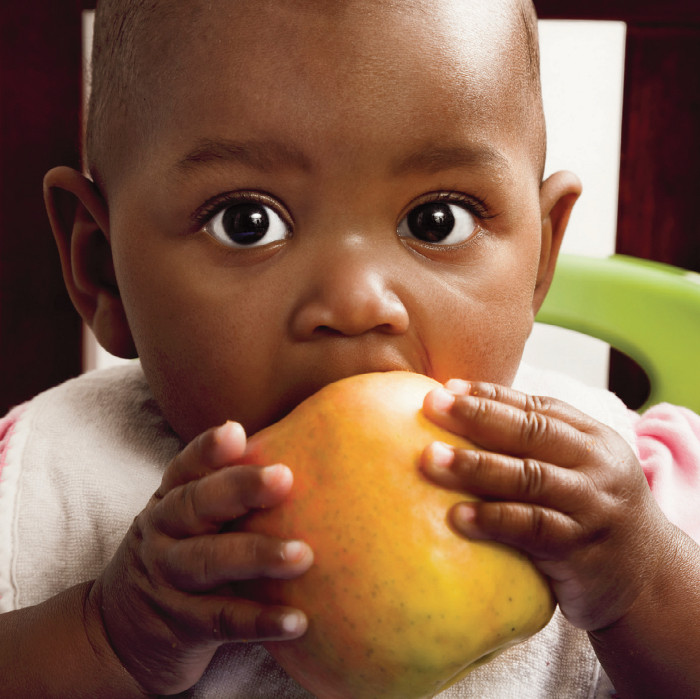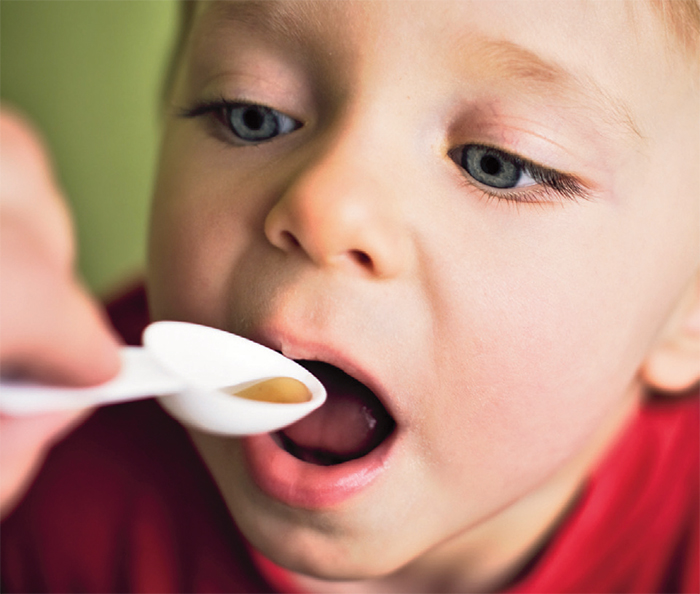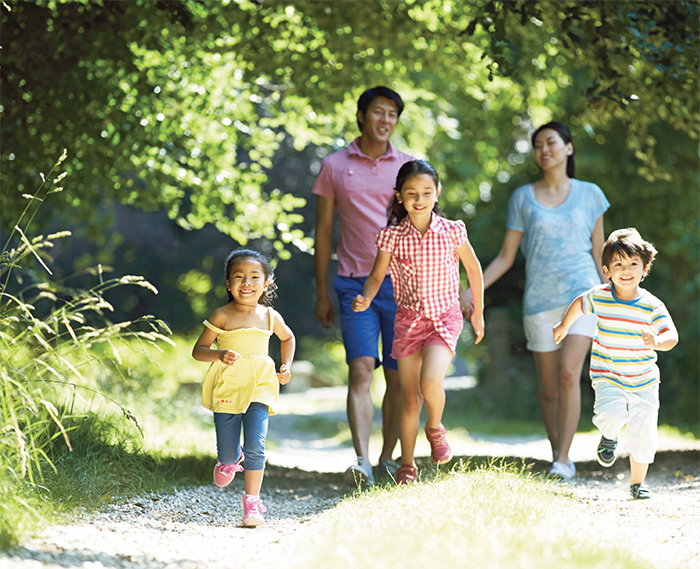Families

Healthy habits
In Families
Bookmark
Record learning outcomes
Learning good lifestyle habits from an early age can help set children off on a healthy path that they can continue on through to adulthood. Unfortunately, the opposite can also be true, and bad habits learnt in childhood can be difficult to shrug off
Parents are the most influential role models a child is likely to have. Children learn by example, and if parents eat healthily and take regular exercise, then it’s likely that their children will do the same. According to the national charity HENRY (Health Exercise Nutrition for the Really Young), parents want the best for their children, but in today’s busy, fast-food society, a healthy family lifestyle isn’t always easy. “With childhood obesity, it’s not just what children eat and how, but also the family unit and lifestyle,†says Kim Roberts, chief executive of HENRY. “We are not talking about a strict upbringing, but about balanced parenting and building suitable boundaries. Food preferences and lifestyle habits are formed at the beginning of life and these habits are very hard to break.â€
Building blocks
More than a third of children aged between two and 15 years are obese or overweight, according to research carried out last month by King’s College London (KCL). And the Royal College of Paediatrics and Child Health (RCPCH) says that obesity is closely linked to “obesogenic†environments, which encourage children to consume too much unhealthy food (rich in salt, fat and sugar) and lead a sedentary lifestyle. The earlier parents start to shape their child’s health choices, the better. “Babies are born with a natural preference for sweet foods,†says Kim. “The age of six to 12 months provides the window of opportunity to try new tastes. This becomes much harder when babies become toddlers. It is important that parents persevere with offering a particular food, even if a baby refuses after the first try. It may take five or six exposures before a baby develops a liking for a particular taste.â€
Ideally, parents should eat family meals with their children, eating the foods they want their children to eat
As children get older, it becomes more difficult for parents to influence their lifestyle decisions. According to the KCL research, the highest rates of obesity are among 11 to 15 year olds, rising from 26.7 per cent in 1996 to 37.8 per cent in 2013. Dr Colin Michie, chair of the RCPCH Nutrition Committee, says this is the age group that is most likely to be easily influenced by the world around them. He says: “If we are to make in-roads, we need to create a healthy environment by ensuring that children are not exposed to junk food advertising before the 9pm watershed, licences for fast food restaurants are not granted close to schools or colleges, a taxation on foods high in salt, sugar and fat is explored and young people are taught how to cook healthy meals in school much earlier.â€
Healthy choices
Sharing meals can be an ideal way for a family to spend time together and may also help to improve the range of foods that children eat. However, according to the Health Education Trust (HET), children today eat far fewer meals with the family than a generation ago, as a consequence of busy lifestyles and long working hours. The reduced amount of time available to prepare balanced meals has helped to drive the increased consumption of nutrient-poor convenience foods. “Ideally, parents should eat family meals with their children, eating the foods they want their children to eat,†says Judy More, paediatric dietitian and member of the Infant & Toddler Forum.
More than a third of children aged between two and 15 years are obese or overweight
“Children need to be taught about appropriate portion sizes and to recognise when they have had enough. If parents have been brought up to see certain foods as treats or use them to reward or comfort, it is important not to pass this way of thinking on to their children. A lot of families celebrate through food, but parents should find other ways to have family time together, replacing the pleasure from food with their time and attention.†Alcohol is another area in which parents have significant influence over children’s decisions.
Research from Drinkaware recently highlighted that 30 per cent of parents in the UK are drinking above the unit guidelines and that there are links between the amount parents drink, their attitudes to children and alcohol and their children’s drinking habits. “Most parents want their children to grow up with a healthy relationship with alcohol and try to set a good example,†says Siobhan McCann, head of campaigns and communications at Drinkaware. “The problem is that some parents drink above the guidelines without realising and this in turn influences their children’s attitudes and behaviour.â€
 The age of six to 12 months provides a window of opportunity to try new tastesÂ
The age of six to 12 months provides a window of opportunity to try new tastesÂ
Â
Â
Get active
Being active has a positive impact on academic standards and behaviour, as well as keeping children in good health. According to National Institute for Health and Care Excellence (NICE) guidance, children need at least 60 minutes of physical activity every day. This can be achieved in a number of short 10-minute bouts. At least twice a week, the activity should include weight-bearing activities.
Yet many children and young people in the UK are not achieving the recommended targets. Some children are naturally good athletes. Others may need a push in the right direction or the opportunity to find an activity they enjoy – whether it’s football, athletics, dancing or simply running around a park.
Kim Roberts stresses that children and teenagers don’t have to go to a gym or have a swimming session if they want to keep fit – regular activities can include walking, cycling or playing active games. Darren Padgett, director of Team Activ, a not-for-profit organisation providing physical activities in Yorkshire schools and communities, says that getting children interested in sport at an early age helps them become fit for life.
“Children are often put off by PE at school, but we take a completely different approach by offering more innovative activities such as dodgeball and geocaching,†he says. “There’s a whole host of ways people can stay active – walking is still one of the best ways to exercise – and it’s our mission to inspire children and spark a passion.â€
Sleep mattersÂ
Quality sleep is essential for children’s growth and development. According to The Sleep Council, as a general rule, children under three need 12 hours sleep a night; four to six year olds need between 10.5 and 11.5 hours; six to 12 year olds around 10 hours, and teenagers about eight to nine hours. “A lack of sleep can have a damaging effect on children and teenagers, from weight gain to depression, from poor performance and concentration to reduced creative ability and lower immunity to diseases,†says Lisa Artis of The Sleep Council. “It’s important that parents and children understand that good sleep is as vital to overall health and wellbeing as a sensible diet and plenty of exercise.â€
Establishing and sticking to a bedtime routine right from the start until the early teens can go a long way to minimising later problems
Many different factors can affect children’s sleep, including dehydration, overstimulation, hunger and overindulgence. A recent study published in BMJ Open by Norwegian researchers revealed that the longer teenagers spend on screen time during the day, the longer it takes for them to go to sleep and the more likely they are to be sleep deprived.
“Establishing and sticking to a bedtime routine right from the start until the early teens can go a long way to minimising later problems,†says Lisa. “Ensure the environment is right for sleep – it should be cool, quiet, dark and free from distraction. Ideally, computers, gaming machines and TVs should be banned from the bedroom, but if that’s unlikely, keep them away from the bed and try to limit the use of these devices just before bedtime.â€
Technology timeÂ
In May 2014, a study at the Universities of Birmingham and Bristol, funded by the British Heart Foundation, found that the amount of time children spend in front of TV, phone and computer screens is closely associated with their parents’ own habits. Too much screen time has an impact on attention span and concentration as well as appetite control, and it encourages a more sedentary lifestyle. Online safety is another issue that parents may need to address.
A survey conducted by LeapFrog, which creates tablets specifically for children, revealed that children as young as five are sharing key personal information online with people they don’t know, with 75 per cent of parents not monitoring their child’s online usage. “Technology can be exciting and desirable to small children, so it is important to set boundaries from an early age,†says Richard Graham, consultant psychiatrist with a special interest in children’s technology addiction, based at Tavistock and Portman NHS Foundation Trust.
“Parents must ensure their child has an interest in other children and more active pursuits, and that their child isn’t trying to swipe everything and anything with their finger. Parents should keep machines out of reach to avoid temptation, and also take an interest in what their child is doing with technology to ensure their child is safe.â€
 Too much screen time has an impact on attention span, concentration and appetite control
Too much screen time has an impact on attention span, concentration and appetite control
Â
Common childhood conditionsÂ
Head lice
Head lice live on the scalp and are spread by head-to-head contact. These tiny, wingless insects often cause itching and occasionally a rash on the back of the neck. Head lice are difficult to see, even when the head is closely inspected. An active infestation can only be confirmed if a live louse is found, usually with a fine-toothed detection comb. Most lotions and sprays designed to kill head lice are silicone or oil-based products with a physical action on the lice. Wet combing (using a specially designed head lice comb) can effectively remove lice, but it needs to be done regularly, every few days. Head lice infestation is difficult to avoid, although preventative sprays are available.
Atopic eczema
Atopic eczema affects around one in five children in the UK. It tends to run in families and is most common in children who are prone to allergies. Around 50 per cent of all cases improve by the age of 11, and around two-thirds improve by the age of 16. Atopic eczema affects mainly the hands, insides of the elbows, backs of the knees and face or scalp. The affected skin is usually dry, cracked, red, sore and itchy. Symptom triggers include soaps, detergents, stress, the weather and food allergies (especially in young children with severe symptoms). Mild to moderate atopic eczema can often be managed with the regular and liberal use of emollients and applying prescribed topical steroids sparingly during flare-ups.
Nappy rash
Nappy rash occurs when the skin covered by a nappy comes into contact with urine and stools, which then irritate the skin. It is a condition that will affect most babies at some point. Changing nappies frequently; cleaning the baby’s bottom with damp cotton wool or baby wipes; nappy-free time, and a barrier cream can all help to relieve and prevent nappy rash.
Coughs and colds
Children can catch up to eight colds a year, but most colds get better within a week without any complications. It is essential that parents use cough and cold products that are suitable for their child’s age group. Junior paracetamol or ibuprofen liquid can help with fever and pain. Saline nose drops can help to relieve a stuffy nose; taking the child into a warm, moist atmosphere (e.g. a bathroom with a hot bath or shower running) may also help.
 Junior paracetamol or ibuprofen liquid can help relieve fever and pain
Junior paracetamol or ibuprofen liquid can help relieve fever and pain
Fever
As a general rule, a fever in a child is a temperature over 37.5oC (99.5oF). This is often a sign of an infection or illness, but may also occur after vaccinations, during teething or when overly hot. Junior paracetamol or ibuprofen liquid, at a dose suitable for the child’s age, should help lower a fever. It is also important to keep the child hydrated with plenty of waterbased drinks and to keep them cool with light clothing. If a child seems otherwise well, and is playing and eating normally, the fever is unlikely to be a sign of a serious illness. Parents should seek medical advice immediately if their child has other signs of illness, such as floppiness and drowsiness, a red or purple rash, discoloured skin, cold hands or feet or leg pains, or if the fever is 39oC or more in children under six months. Fever in babies under three months must be referred to a GP immediately.
Ear infections
Middle ear infections are usually caused by viruses so don’t respond to antibiotics. They often follow a cold and get better on their own. An ear infection can cause ear pain, a fever, sickness or slight hearing loss. A young child may pull or rub at their ear. If a child has earache but is otherwise well, parents should give them paracetamol or ibuprofen for 12 to 24 hours. They should seek medical advice if the symptoms persist after two to three days or if there is pus or fluid discharge.
Diarrhoea and vomiting
Persistent diarrhoea may be caused by a viral infection, especially if it is accompanied by vomiting. If babies and young children are suffering from diarrhoea or vomiting, it is important to give them extra fluids (e.g. oral rehydration therapy) to prevent dehydration. Parents should seek medical help if the diarrhoea and/or vomiting lasts for more than a couple of days or if the child has other symptoms, such as stomach ache or blood in the stools. Some children between one and five years pass frequent, smelly loose stools that may contain recognisable foods (e.g. carrots or peas). If the child is otherwise healthy and growing normally, this is called ‘toddlers diarrhoea’ and isn’t a cause for concern.
Â

